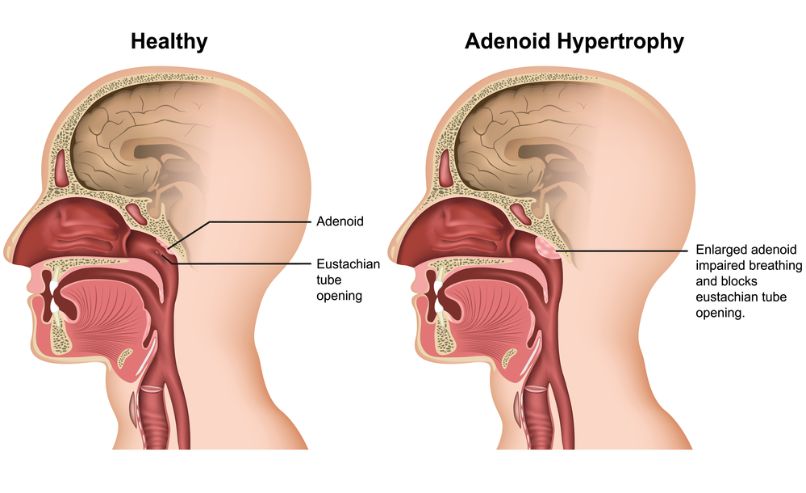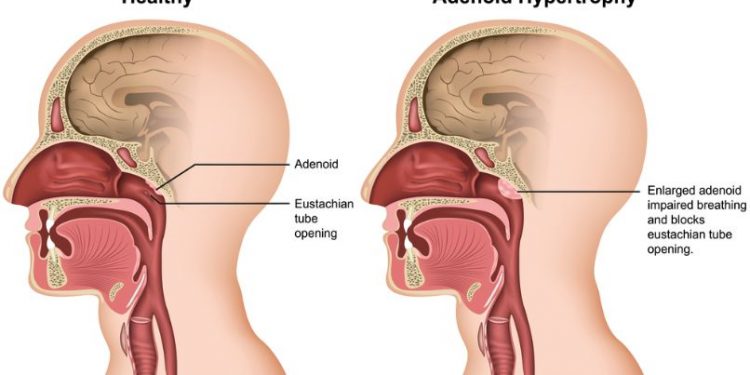Adenoid hypertrophy is a condition in which the adenoids become enlarged. This enlargement is most common in children and can be caused by bacterial or viral infections, allergies, acid reflux, or other factors.
Adenoids are located in the upper airway between the nose and the back of the throat (nasopharynx). They help keep the airways clear by preventing mucus from building up in the airways.
Most people with adenoid hypertrophy do not have symptoms or signs that indicate they have enlarged adenoids. A healthcare provider can usually diagnose adenoid hypertrophy by performing a physical examination and reviewing a person’s medical history. If mouth breathing, chronic middle ear infections, or sleep problems are present, the physician may perform a nasopharyngoscopy to look at the adenoids.
Abnormalities of the adenoids can lead to nasal obstruction, sinusitis, and coughing. They also can affect sleep and cause bad breath, dry mouth, and cracked lips. Symptoms may also occur when the Eustachian tubes, which connect the middle ear to the nasopharynx, become blocked due to enlarged adenoids.
Allergies are a common occurrence in children with adenoid hypertrophy, as are nasal and sinus infections. Allergies can lead to an inflammatory response in the nose and can cause the adenoids to become enlarged.
Other conditions that can lead to adenoid enlargement are acid reflux, cleft palate, and some types of cancer. Infections, such as otitis media and pneumonia, can also result in an enlarged adenoid.

In most cases, adenoid hypertrophy is asymptomatic and does not require treatment. However, if the condition is chronic or causing serious respiratory or ear symptoms, it may be necessary to remove the adenoids.
When adenoids are removed, patients often experience a reduction in the amount of mucus in their nasal passages. This reduces the likelihood of infection and improves overall health.
Surgery for adenoid and tonsil hypertrophy is typically performed by an ENT surgeon on an outpatient basis in healthy children. The operation is relatively painless and requires no hospitalization for the child afterward.
The surgery may be performed on a small incision behind the nose or in the upper jaw. Some people will be required to wear a nose splint for several days after the procedure.
Adenoids are often removed with a special instrument that allows the physician to insert a flexible tube into the nose and view the adenoids from the inside of the nose. Occasionally, an X-ray or a CT scan may be used to evaluate the adenoids and determine their size.
If a patient has had significant and symptomatic adenoid hypertrophy, an ENT specialist should be considered for further evaluation. This can include a nasopharyngoscopy, sleep study, and an X-ray or CT scan of the nasal cavity to examine the nasal airway.
The adenoids are the largest organs in the nasal cavity. They help keep the airways open by preventing mucus from building up and blocking them. They are also important for swallowing, speaking, and breathing.









